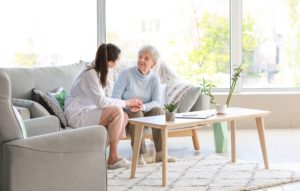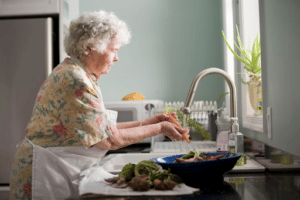
Talking to your aging parents about the future requires discussing sensitive topics. However, communication is key to ensuring that your loved ones can live out their golden years exactly as they wish. Discussing the following topics with your parents will allow you to plan ahead.
Support and Assistance
Many people retain their independence well into their 80s or 90s. Still, there are probably some life areas where your parents would like additional support. For example, the natural aging process can make driving more difficult for people over 70 years old.
If your parents have conditions that impact their driving, talk to them about alternative arrangements, like a carpool or senior transportation service.
If your parents cannot manage day-to-day tasks, you can talk about delegating some of their responsibilities. For example, you could put their bills on autopay to streamline their finances. If your family member needs support with their personal care or running errands, some Medicare plans will cover the cost of an in-home helper. You can also divide these duties amongst yourself and other relatives.
Retirement Goals
The ideal retirement lifestyle can vary greatly by person. Some seniors wish to maintain their current home, while others look forward to downsizing. No matter how your loved ones envision their post-work life, they must have the finances in place to fund their vision.
Parents may be hesitant to discuss their financial circumstances with their children. Reassure your loved one that your intention is not to pry, but to set expectations. Seniors relying on Social Security or a single retirement account may need financial assistance to cover expenses. In fact, a 2020 AARP survey found that more than 50% of adult children provide some type of financial support to their parents.
An open conversation about your parents’ retirement goals and financial situation can let you know if you will need to adjust your finances accordingly.
Generational Planning
Managing generational wealth is important to older Americans. Seven out of every 10 seniors plan to pass assets to their families. However, inheritance planning can be an emotional and legally complex endeavor. If your parents have considerable assets or wealth, ask them how they envision their financial legacy.
Recommend that they get in touch with an experienced wealth manager or financial planner. These professionals can use estate planning software to manage your family’s assets and store essential documents, such as deeds, trusts, wills, and insurance policies.
Living Arrangements
In recent years, the variety of senior housing available has increased tremendously. There are suitable options for seniors with a range of needs and lifestyle preferences. Some of the most common housing types include:
- 55+ Communities- These communities resemble any other residential area or complex. However, only individuals over 55 years old can rent or purchase units. Since residents are at the same stage of life, seniors living in a 55+ community may have an easier time making friends. While there are on-site amenities such as athletic courts or clubhouses, there are generally no healthcare facilities. As a result, these communities are best suited for individuals in relatively good health.
- Independent Living- Independent living arrangements have all of the benefits of 55+ communities, but fewer responsibilities. The monthly fee covers all costs, including property taxes, maintenance, and meals. These communities often have services like pharmacies, hair salons, and restaurants onsite, which reduces the need to travel outside of the complex.
- Assisted Living- Seniors with chronic health conditions that require ongoing monitoring and medical care can consider an assisted living facility. Residents pay a monthly fee that covers housing and daily living assistance. Many assisted living facilities also hire on-call physicians and nurses to provide any medically necessary care.
- Skilled Nursing Facilities- Skilled nursing homes are designed for seniors with greater health needs than an assisted living facility can accommodate. In this type of living arrangement, qualified medical professionals provide around-the-clock care.
- Continuous Community Care (CCC)- These facilities combine all of the different levels of senior care in one complex. This enables an individual to remain in the same facility as their need for support increases. CCC centers also allow couples with diverse care needs to remain together.
Seniors also have the option to age in place. If your loved ones wish to remain in their home, you may need to discuss arrangements such as in-home care. You may also need to modify the building so that your parents can navigate their home safely.
Conclusion
Talking about finances and long-term planning with elderly loved ones can mean having some difficult conversations. However, if approached with respect and compassion, these discussions can improve your relationship with your parents and bring your family peace of mind.








